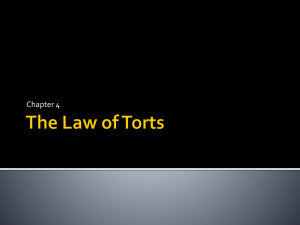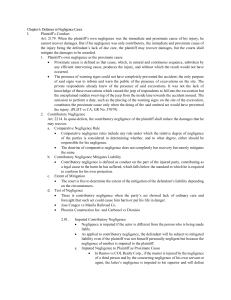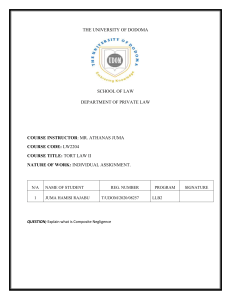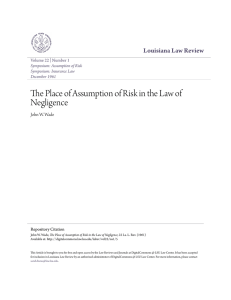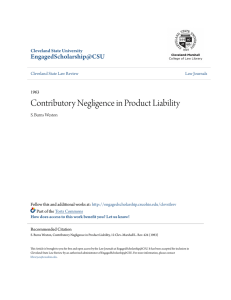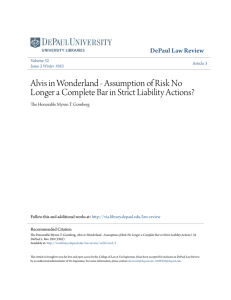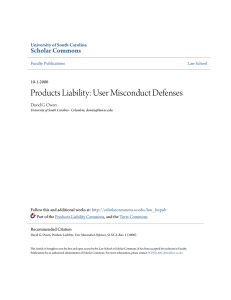Comparative and Contributory Negligence
advertisement
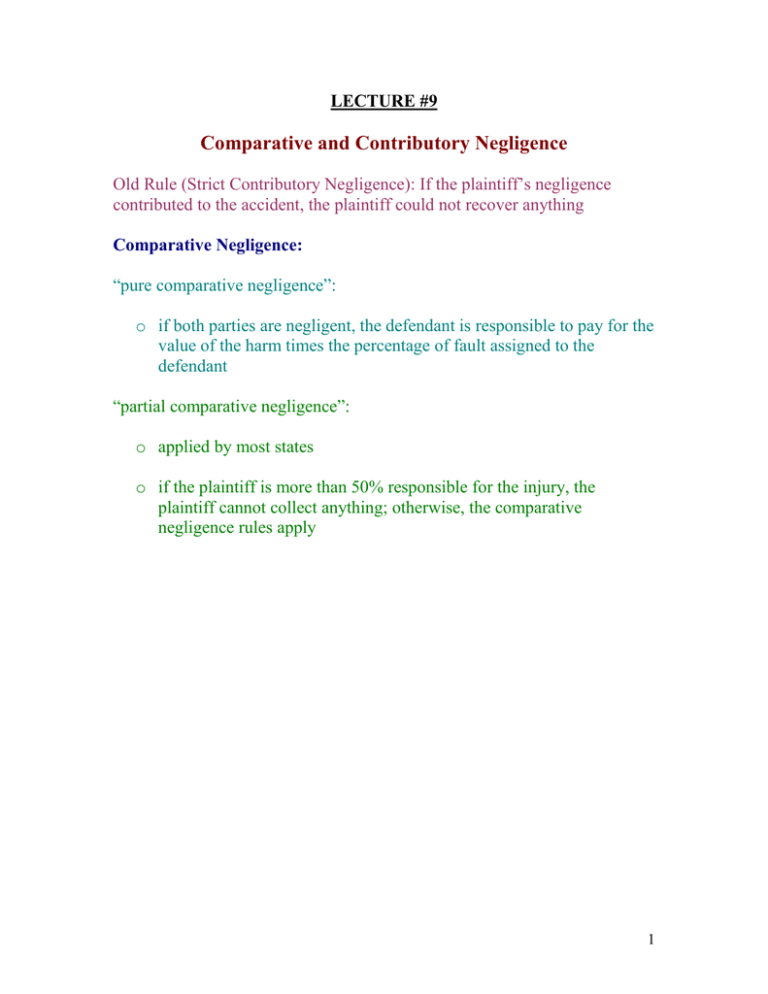
LECTURE #9 Comparative and Contributory Negligence Old Rule (Strict Contributory Negligence): If the plaintiff’s negligence contributed to the accident, the plaintiff could not recover anything Comparative Negligence: “pure comparative negligence”: o if both parties are negligent, the defendant is responsible to pay for the value of the harm times the percentage of fault assigned to the defendant “partial comparative negligence”: o applied by most states o if the plaintiff is more than 50% responsible for the injury, the plaintiff cannot collect anything; otherwise, the comparative negligence rules apply 1 Assumption of Risk o If the plaintiff’s contributory negligence was severe enough or was done through an intentional act putting herself in harm’s way, a court can consider the plaintiff’s actions an “assumption of risk” and not allow any recovery at all for the plaintiff. o This defense applies in a wide variety of cases than contributory/ comparative negligence, as it, in essence, makes the conduct of the defendant irrelevant, as it is not at all considered the cause of the harm. The primary cause of the harm is considered to be the plaintiff’s actions. 2


